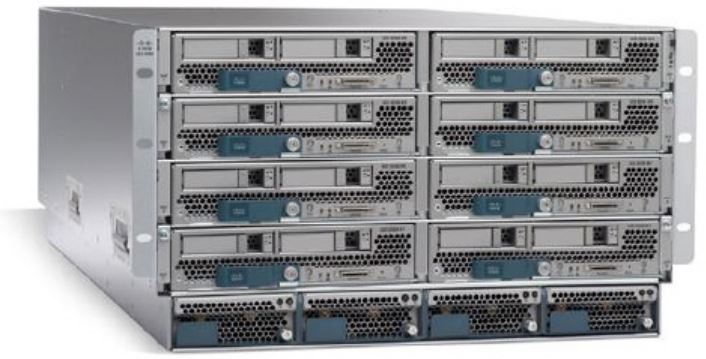I recently have had a few people ask me what Cisco UCS adapter placement policies are used for and how/when to use them. This post will hopefully answer those questions and give a few examples.
First I will start with the Cisco definition of what vNIC/vHBA placement policies are. This definition was copied from the Cisco UCS Manager GUI Configuration guide – Cisco UCS GUI Configuration Guide
vNIC/vHBA placement policies are used to assign vNICs or vHBAs to the physical adapters on a server. Each vNIC/vHBA placement policy contains two virtual network interface connections (vCons) that are virtual representations of the physical adapters. When a vNIC/vHBA placement policy is assigned to a service profile, and the service profile is associated to a server, the vCons in the vNIC/vHBA placement policy are assigned to the physical adapters. For servers with only one adapter, both vCons are assigned to the adapter; for servers with two adapters, one vCon is assigned to each adapter.
You can assign vNICs or vHBAs to either of the two vCons, and they are then assigned to the physical adapters based on the vCon assignment during server association. Additionally, vCons use the following selection preference criteria to assign vHBAs and vNICs:
- All
-
The vCon is used for vNICs or vHBAs assigned to it, vNICs or vHBAs not assigned to either vCon, and dynamic vNICs or vHBAs.
- Assigned-Only
-
The vCon is reserved for only vNICs or vHBAs assigned to it.
- Exclude-Dynamic
-
The vCon is not used for dynamic vNICs or vHBAs.
- Exclude-Unassigned
-
The vCon is not used for vNICs or vHBAs not assigned to the vCon. The vCon is used for dynamic vNICs and vHBAs.
For servers with two adapters, if you do not include a vNIC/vHBA placement policy in a service profile, or you do not configure vCons for a service profile, Cisco UCS equally distributes the vNICs and vHBAs between the two adapters
Usage Scenarios
Half-width Blades (B200-Mx)
If you have half-width blades (B200-Mx) then you will only ever have a single mezzanine card or vCon1. In this case you would only use a vNIC/vHBA placement policy in these two scenarios:
- In a VN-Link in hardware configuration and you are attaching a Dynamic vNIC Connection Policy to the service profile. In this scenario a vNIC/vHBA Placement Policy is required so that the dynamic vNICs get assigned after the non-dynamic vNIC/vHBAs. This guarantees that the ESX vmnics and HBAs are at the top of the PCI numbering and that some of the dynamic vNICs aren’t intermixed. Here is a screen shot of this configuration, anything not assigned (dynamic vNICs) are placed below the assigned vNICs/vHBAs.

- To force the PCI numbering of the NICs/HBAs as seen by the operating system. If you wanted to make sure the HBAs were seen before the NICs or vice versa you could do that with a placement policy.
Full-width Blades (B250-Mx, B440-M1)
- Use a placement policy to evenly distribute vNICs and vHBAs across 2 mezzanine cards (vCon1 and vCon2). Here is a screen shot of this configuration,

- You have two different type of mezzanine cards; Cisco UCS VIC M81KR (aka Palo) and Cisco CNA M71KR (aka Menlo). Lets say for compatibility reasons you want all vNICs on the Palo and all vHBAs on the Menlo. In this scenario would create a placement policy to configure this assignment. Here is a screen shot of this configuration,

- In a VN-Link in hardware configuration and you are attaching a Dynamic vNIC Connection Policy to the service profile and you want all of the Dynamic vNICs to be on one adapter and regular vNICs/vHBAs to be on the other.

- You have two different types of mezzanine cards; Cisco UCS VIC M81KR (aka Palo) and Cisco CNA M71KR (aka Menlo) and you are configuring VN-Link in hardware. Lets say for compatibility reasons you want all vNICs on the Palo and all vHBAs on the Menlo. In this scenario would create a placement policy to configure this assignment. Here is a screen shot of this configuration,

It is important to note that only the Cisco UCS VIC M81KR (aka Palo) allows you to have more than 2 vNICs/vHBAs per adapter and is the only card that allows for VN-Link in hardware where you have up to 54 Dynamic vNICs that are dynamically assigned to VMs that are configured to be part of the UCSM Managed Distributed Virtual Switch. – VN-Link in Cisco UCS









